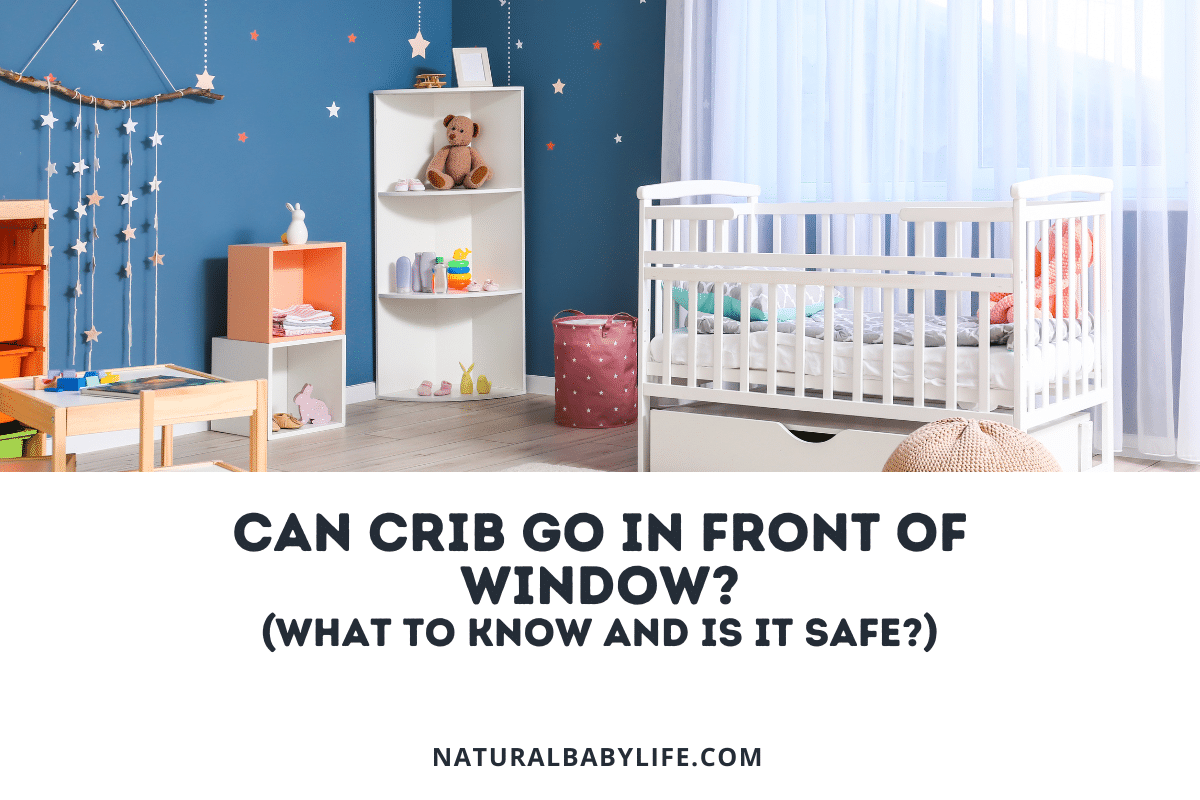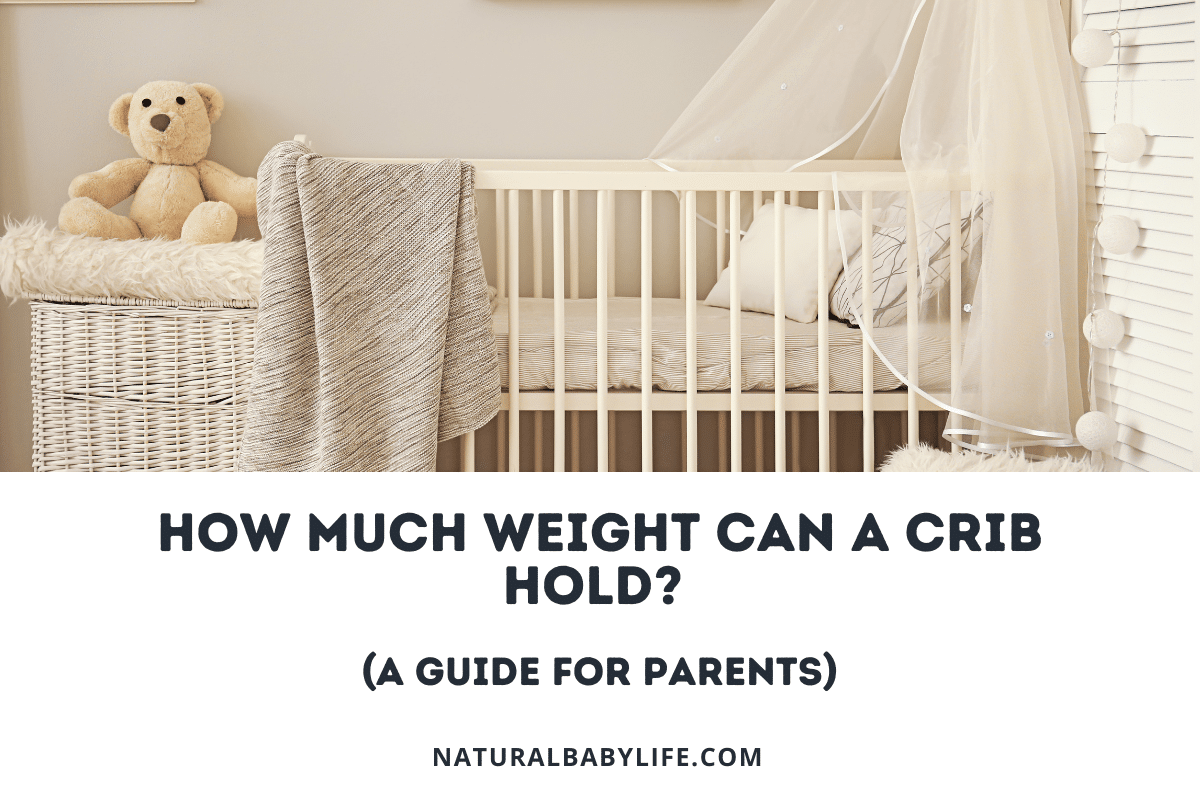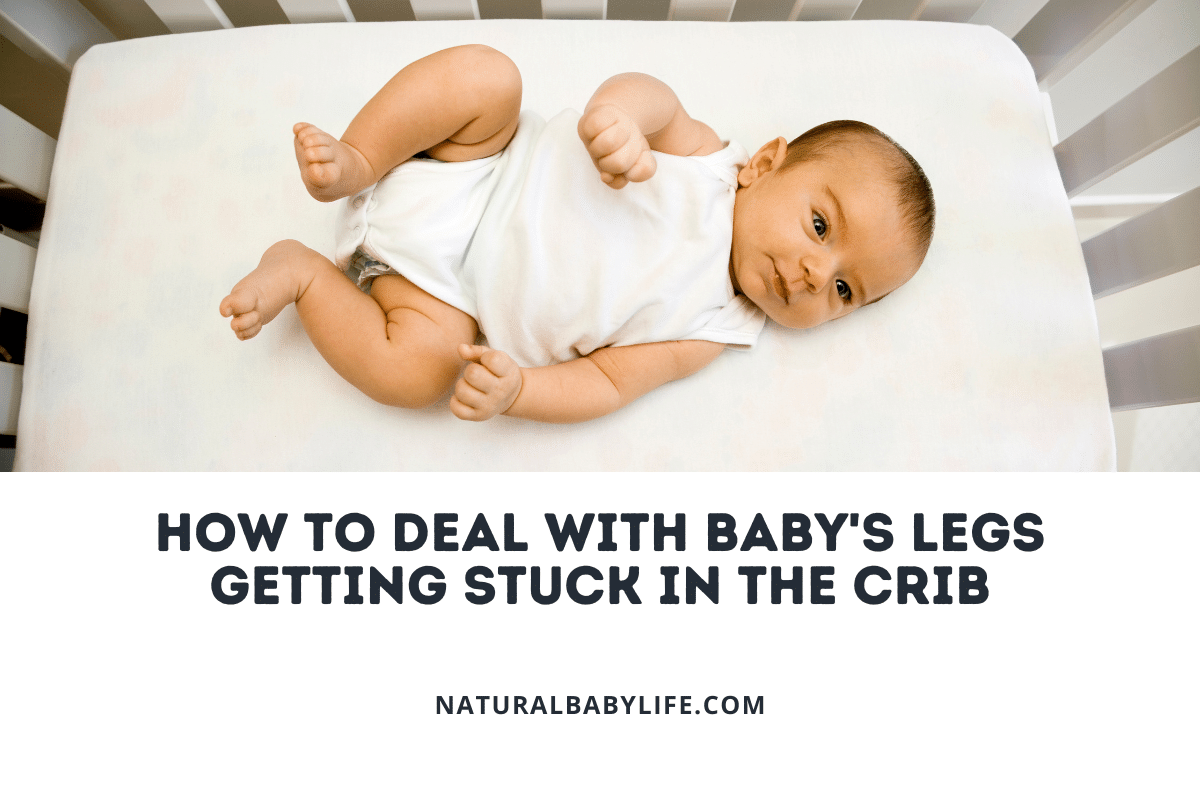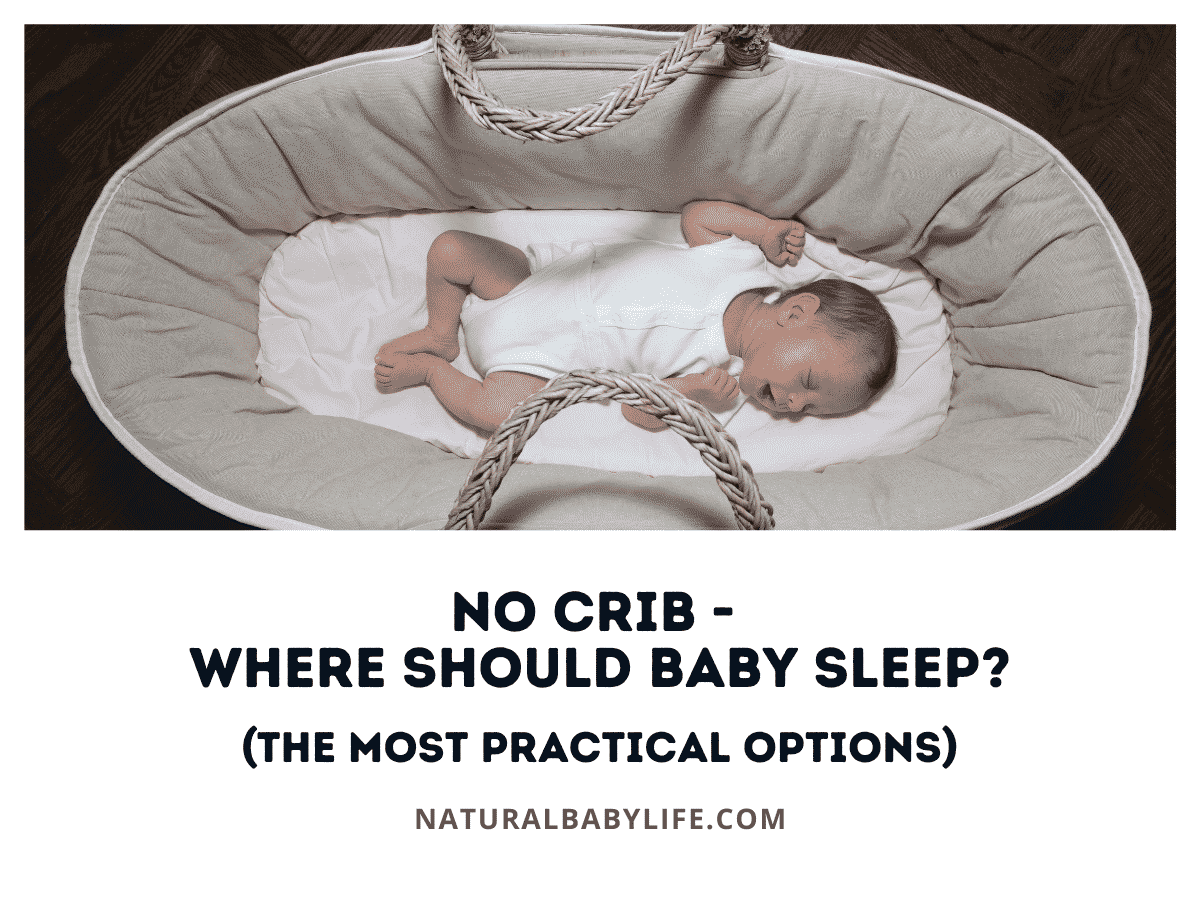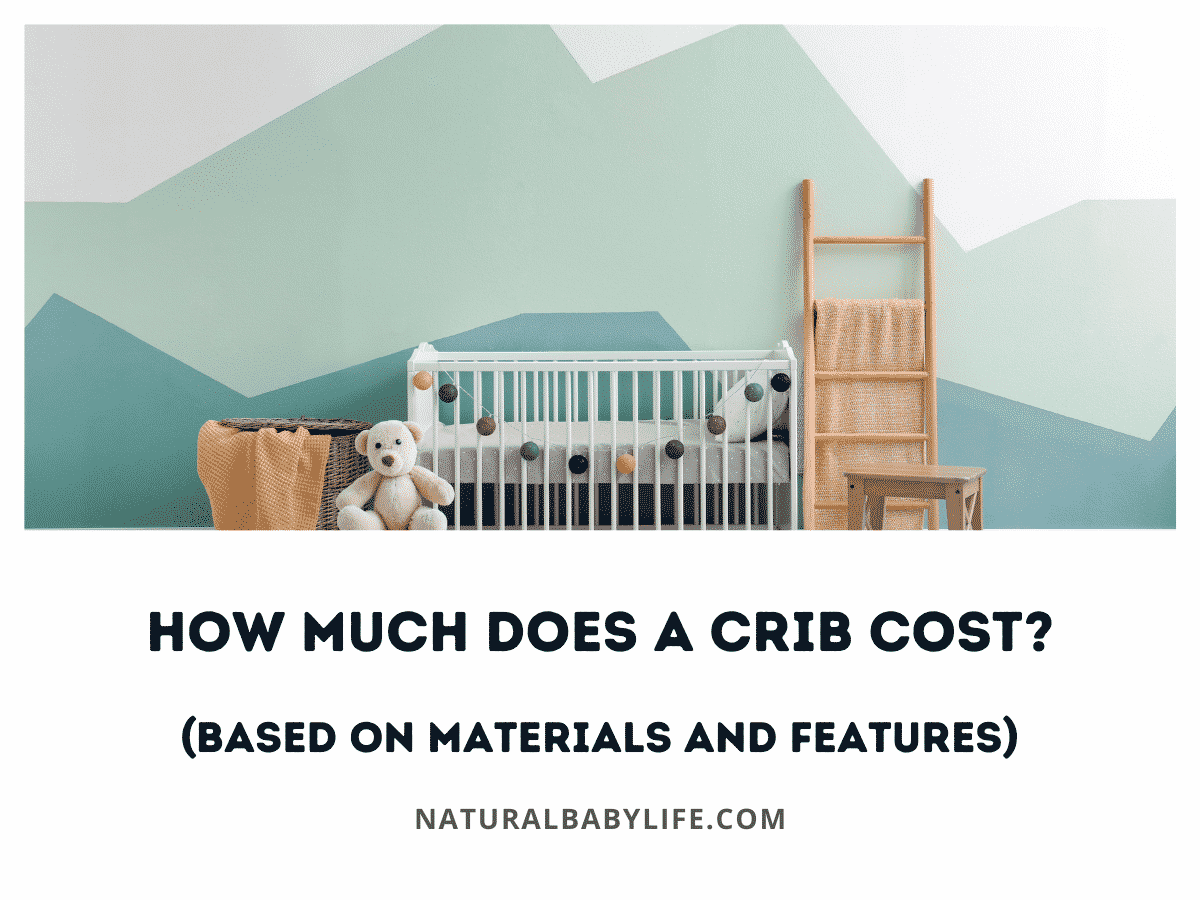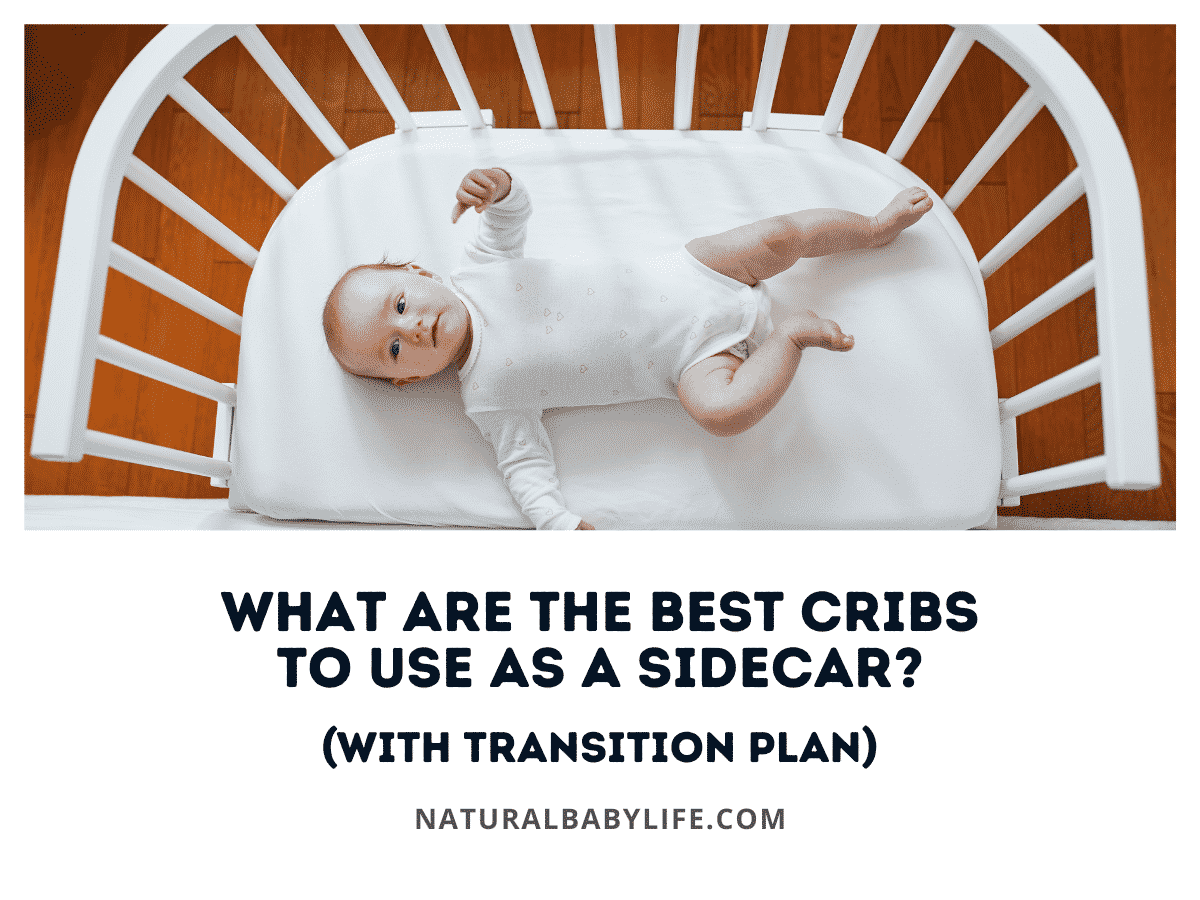If you’re setting up your little one’s nursery, you might be concerned to note a chemical smell coming from your recently-purchased crib. Unfortunately, it’s pretty common for new furniture, including cribs, to smell like fresh paint or chemicals. But is the smell dangerous, and what can you do to get rid of it?
If your baby’s crib smells like chemicals, it’s probably caused by volatile organic compounds (VOCs), which are emitted by thousands of common products, including paints and wood stains. VOCs can cause short- and long-term health problems if inhaled, so it important that your air the crib out thoroughly – until the smell is gone – before use.
Even though VOCs can be dangerous, there are steps you can take to help your furniture ‘gas off.’ Keep reading to learn about VOCs and what you can do to keep your child safe and healthy.
Table of Contents
Why does baby’s crib smell like chemicals?
If your baby’s crib smells like chemicals, the likely culprit is the presence of volatile organic compounds (VOCs for short), which we’ll discuss in more detail later in this article.
These chemical compounds are what cause your baby’s crib to smell. As soon as you open the packaging on a new crib (or mattress, for that matter,) any VOCs contained in your new furniture start to release in the form of gases. Your nose registers these gaseous compounds as a chemical smell.
Because the chemical smell of your baby’s crib is basically caused by floating chemicals, you’d be right to assume that it can pose some health hazards. As with any type of pollutant, excessive exposure to gaseous chemicals can cause both short- and long-term health effects.
Some short-term effects can include irritation of the eyes, nose and/or throat, headaches, and nausea. Consistent exposure to high levels of VOCs can cause damage to the liver, kidney, and central nervous system. Many VOCs are known to cause cancer, and several more are suspected carcinogens.
A chemical smell in the nursery can be particularly dangerous to babies, who spend lots of time sleeping pressed up against the mattress and crib. Luckily, the smell will dissipate over time as the chemicals break down.
VOC gases that you’re likely to find in your nursery usually disappear completely within 6 months after you’ve unpackaged new furniture, although dangerous levels of the gases only exist for the first few days or so. A good rule of thumb is to let any new furniture ‘gas off’ before letting your baby use it. After the nasty chemical smell has disappeared, the VOC levels should be safe for your little one.
What are VOCs?
VOCs are a class of volatile organic compounds that are used to make many everyday household products.
VOCs are found in a wide array of common household products, including many paints and furniture varnishes. Because of their common usage, it’s likely that any number of items in your child’s nursery, including their crib, have the potential for VOC emissions.
These chemicals are organic, which means they’re made up of different variations of carbon compounds. VOCs are considered volatile because they can participate in atmospheric photochemical reactions (basically, they can use the energy found in sunlight to form chemical bonds with oxygen and other atoms that make up the atmosphere). VOCs are a type of pollutant that can escape from certain solids or liquids in the form of a gas.
New baby crib smells like chemicals
If your new baby crib smells like chemicals, it’s likely caused by the presence of the VOCs used to make the crib.
Most of the chemicals you’re smelling are present in the wood stain of the crib, although if your crib is made of particleboard, that can also launch high levels of pollutants into the air of your nursery.
To get rid of the chemical smell, you’ll want to give the crib time to ‘gas off’ before letting your baby use it. Try to keep the air in the nursery flowing, and avoid spending too much time in the room until the chemical smell has disappeared.
New baby crib smells like paint
If your new crib smells more like paint than chemicals, the cause is most likely the painted finish on the crib.
Although many types of commercial paint can contain dangerous levels of VOCs, there are some water-based paints that are safer for use on cribs. If you haven’t yet purchased a crib, consider shopping for one that advertises ‘green’ or ‘all-natural’ paint products.
If you’ve already purchased a crib that has a VOC-based paint, you’ll want to wait for the paint smell to dissipate before using the crib. Letting the crib air-out outside or with the windows in the nursery open should help drop the VOC levels to a safer level.
Is new furniture smell dangerous for babies?
As wonderful as the ‘new furniture smell’ can be, it can also be a health hazard for babies.
The smell that comes from new furniture is actually composed of VOCs releasing from the furniture in the form of gases. Exposure to VOCs can be harmful for older children and adults, but it can be particularly dangerous for young babies.
Newborns tend to use new furniture more often than older children or adults; after all, most first-time parents stock the nursery with an all-new crib, mattress, rocking chair, and changing table. Additionally, babies sleep more than adults, so they’re going to spend more time pressed up against a VOC-emitting mattress. Young babies also take in more air per unit body weight than adults, which means they’re more susceptible to inhalation exposure.
In order to keep your little one safe, you’ll want to keep them away from new furniture for at least a few days until the furniture has gassed off. Ideally, furniture should ‘off-gas’ for a few weeks before being used.
What is the chemical smell in a new crib?
You’re likely to be met with a strong chemical smell when you unpack a new crib and/or mattress. That smell is caused by the VOCs used to make the new furniture you’ve purchased since researchers have found more than 30 different types of VOCs in common crib mattress brands.
The most abundant chemicals found in crib mattresses are also found in household cleaning products. Limonene, for example, produces the lemon scent touted by several household cleaners and is also found inside several prominent crib mattress brands. Phenol, neodecanoic acid, and linalool are some of the additional chemicals identified by researchers. Even nice-smelling chemicals such as limonene can cause irritation with short levels of exposure, and larger health problems after long-term use.
It’s not just a crib’s new mattress that can release toxic chemicals. A wooden crib can also release VOCs, although the amount and type of chemicals vary depending on the type of wood the crib is made of.
The chemical formaldehyde is present in every type of wood and has been associated with incidences of asthma, skin dermatitis, and even cancer. Many cheaper wood furniture varieties are made from composite board or plywood, which have even higher levels of formaldehyde. Many types of composite board also release benzene, a chemical known to cause cancer.
Finally, the chemical smell of your new crib can also be caused by the paints and finishes used on top of the wood. Although low-VOC finishes are available, many manufacturers don’t use them because they cost more than higher-VOC finishes. Even water-based paints can contain excessive amounts of VOCs, including several that are known to cause cancer.
Because of the health risks associated with VOCs in cribs, it’s important that you allow the chemicals to dissipate before using a new crib or mattress. Giving new nursery furniture time to air out can help minimize the health risks it poses to your baby.
What is off-gassing?
‘Off-gassing’ refers to the process of furniture and other products releasing VOCs into the surrounding air.
This process occurs naturally but can lead to a dangerous buildup of airborne chemicals in enclosed spaces. Baby cribs, as with most other types of furniture, will off-gas after unpackaging.
You’ll want to give a new crib some time for the VOC levels to drop before using it.
How long does off-gassing last?
New furniture can take months to gas off, and some products can continue to release small levels of VOCs for their entire lifetime.
When it comes to the off-gassing timing on a baby crib, you should let the bed off-gas outside, or in a room with good ventilation. Ideally, you should let the crib off-gas in a safe space for as long as possible before use. A good rule of thumb is to let furniture air out for at least one week before using it.
Waiting a week is a long time, but when it comes to the crib your baby will be sleeping in, it’s better to be safe than sorry. Your sense of smell is a good indicator of the effectiveness of your off-gassing regimen: once the crib no longer smells like chemicals, it should be much safer for your baby to use.
Keep in mind that each type of crib is different. Some cribs will be made with solid wood and finished with a natural paint or varnish, and won’t take much time at all to off-gas. Other cribs will be made of particleboard or finished with a VOC-heavy paint. These cribs might take several weeks for their chemical smell to disappear completely.
Try to plan ahead, and be patient as the furniture airs out. The longer you wait, the safer the crib will be for your baby.
Is off-gassing dangerous for babies?
The off-gassing process of furniture can definitely be dangerous for babies.
Common symptoms associated with VOC exposure include:
- Eye irritation
- Nose and/or throat discomfort
- Nausea
- Headache
- Rash or skin reaction
- Dizziness
- Fatigue
Although it might be difficult to observe some of these signs in your baby, if they’re acting generally irritable or unwell, they might have been over-exposed to airborne chemicals. Long-term exposure to high VOC levels can cause damage to a baby’s liver, kidney, or central nervous system. VOCs are also known to cause cancer.
If you’re off-gassing furniture, try to do it outside or in a garage or shed. If you must off-gas furniture inside the house, make sure the room is well-ventilated and you keep babies and young children away from the area.
How do you know when off-gassing is complete and the crib is safe?
Even though VOCs are known to be dangerous, there aren’t any federal or state for ‘safe’ VOC levels in private homes.
Industrial standards state that total VOC levels should stay below 0.5 milligrams per cubic meter of air for safety. Levels between 1 to 3 mg/m3 are considered high and can be dangerous if inhaled.
If you’re off-gassing your baby’s crib, you probably don’t have an accurate way to test the VOC levels in the room. Generally, a good rule to follow with off-gassing is that the item is no longer dangerous if it doesn’t smell like chemicals anymore. If you’re airing out a crib, make sure you press your nose against the mattress as well before you decide the crib has finished off-gassing.
New mattresses can take several weeks to lose their chemical smell, and your baby will be sleeping on the mattress for over ten hours every single day. Wait until any lingering chemical smell is gone from both the crib and mattress before letting your little one sleep in the bed.
How do you get the smell out of a new crib fast?
Off-gassing a new crib will simply take some time.
Luckily, there are a few tricks you can use if you need to get the chemical smell out of your new crib quickly.
Put it outside
Even though it can be a pain, putting a new crib outside can help it air out faster. Off-gassing furniture in an ill-ventilated room can cause the emitted VOCs to stick around and hover inside.
By placing a new crib outside, the chemicals can dissipate in the open air instead of swirling around the furniture. If it’s the middle of the winter or you live in a particularly wet place, a garage or shed will still give you better air ventilation than inside the house.
One of the big benefits to off-gassing furniture outside is that the VOC levels won’t ever build up enough to cause any negative health effects. To be fair, though, leaving furniture outside exposes it to the elements and can lead to a buildup of dirt and dust. Poor weather can also cause some types of wood to split or crack, or cause the paint to chip.
If you’re putting a new crib outside, make sure you avoid any water or extreme temperature variations. It’s also a good idea to bring the crib inside at night so it’s not exposed to the morning dew.
Change the humidity and temperature
High humidity and temperature can help draw out VOCs from furniture.
If you’re trying to speed up the off-gassing process, you can place a new crib in an enclosed, heated room along with a humidifier. After letting the furniture sit in the warm, humid room for several days, you’ll want to ventilate the room and remove the humidifier. Keeping the temperature and humidity low after off-gassing will help keep any remaining chemicals trapped in the furniture.
If you choose to use this method, you’ll want to avoid the enclosed room while the crib is off-gassing. The high humidity and temperature will result in very high VOC levels, and can cause some negative side effects including a headache or dizziness.
High humidity can also contribute to mold development in furniture if you aren’t careful, so be sure to let the room dry out completely after you’ve finished off-gassing the furniture.
Ventilate
If you’re looking to speed up a crib’s off-gassing process, make sure the room you’ve placed it in has excellent ventilation.
If possible, open up a window so that any emitted VOCs can exit the room. You can also make good use of a box fan or ceiling fan to help move the air and disperse any gases coming from the furniture.
If you’re off-gassing inside, you’ll want to avoid the room the new furniture is in. Even with good ventilation, the VOC levels in the room can be high and cause negative health reactions. Ventilation is also one of the slower ways to help off-gas furniture because many of the emitted chemicals take some time to exit the room.
Try a home remedy
If you’re looking to speed up the off-gassing process, there are a few ‘home remedies’ that can actually help get rid of the odor faster:
Baking Soda
Baking soda can react with some types of VOCs by pulling them from the air and combining with them to produce small amounts of carbon dioxide. You can sprinkle baking soda over new furniture, let it sit for a few hours, and then vacuum it off.
This method works particularly well on fabric-covered furniture, such as your crib’s mattress.
White Vinegar
Equal parts vinegar and water can serve as a natural deodorizer for finished furniture. You can spray the mixture onto the hard surfaces of a finished crib, or wipe down the wood with a vinegar-dampened cloth. Make sure you test the solution on an inconspicuous area to make sure the vinegar won’t harm the furniture finish.
You can also leave a bowl of vinegar in the same room near the new crib to help absorb any VOCs that have already been released into the air.
Activated Charcoal
Activated charcoal is actually used in many commercial air filters to help suck VOCs and other harmful particles out of the air. You can find powdered activated charcoal online, and even special ‘odor absorbing bags’ that can trap VOCs without making a mess.
House Plants
With a little bit of planning, you can fill your home with non-toxic plants that are particularly good at eliminating VOCs while also pumping fresh oxygen back into your home. Here’s a neat list of VOC-absorbing plants for you to check out!
If you have any of these plants in your home already, consider moving them into the nursery temporarily to help speed up the off-gassing process of your new crib.
Use an air filter
Your HVAC system is already designed to filter VOCs from the air in your house. Check your furnace filter and switch it out if it seems dirty. You can also purchase a small air purifier that provides localized air filtration to a specific area of your house.
An air purifier can really speed up the off-gassing process of your new crib, but purifiers do cost some extra money. You have to pay the upfront cost of the system, purchase replacement filters, and pay for operating costs.



